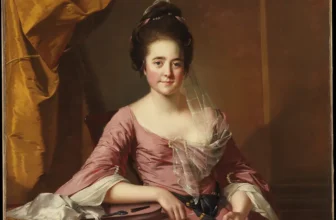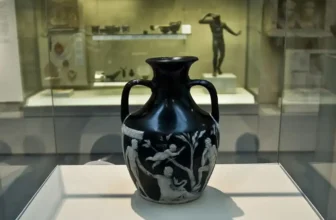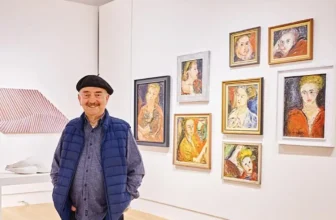The Hidden Art Market: Insider Tactics for Finding Off-Market Classics
The world of fine art has always held an air of mystery and allure. Beneath the glittering surface of auction houses, galleries, and celebrity collectors lies a shadowy network of private sales, undiscovered treasures, and unpublicized deals , known as the hidden art market. This is where serious collectors, savvy investors, and passionate art enthusiasts uncover off-market classic masterpieces long before they ever hit the public eye.
In this guide, we’ll explore how to find these elusive works, where to look for them, and how to navigate the complex yet rewarding world of off-market art. Whether you’re an experienced collector or a curious newcomer, understanding this hidden ecosystem can open doors to opportunities , and masterpieces , that most people will never see.
Understanding the Hidden Art Market
Before learning how to find off-market masterpieces, it’s important to understand what the “hidden” or “off-market” art market actually is.
What Is the Hidden Art Market?
The hidden art market refers to the vast world of art transactions that occur outside public auctions and galleries. These private sales represent over 50% of global art transactions, yet they are rarely reported or publicized. The reasons vary , discretion, privacy, investment strategy, and sometimes, the need to bypass the complexities of auction publicity or taxation.
While auction houses like Sotheby’s or Christie’s dominate headlines, the most valuable and historically significant artworks often change hands quietly, through private dealers, estate sales, closed networks, and family collections. This is where opportunities to discover undervalued or forgotten masterpieces lie.
Why the Hidden Market Exists
Privacy for Collectors: Many high-profile collectors prefer anonymity. Selling off-market allows them to avoid public exposure.
Exclusive Opportunities: Sellers often reach out directly to a trusted network before public listing.
Better Negotiation Terms: Private deals offer flexibility in pricing, payment, and transfer logistics.
Less Competition: Unlike auctions where prices can skyrocket due to bidding wars, private deals can yield more favorable terms.
Estate Liquidations and Family Holdings: Artworks that have been in families for generations often surface quietly through estate lawyers or private appraisers.
How to Discover Classic Masterpieces Before Anyone Else
Finding off-market masterpieces requires more than just money , it demands knowledge, relationships, and timing. Here’s how experienced collectors gain access to rare, undiscovered artworks.
1. Build Relationships with Art Insiders
Networking is the foundation of the hidden art world. The people who know where masterpieces are hidden are often not gallery owners, but rather:
Art historians and researchers
Estate lawyers and inheritance managers
Private art dealers
Curators and restorers
Museum archivists
Auction house specialists
Cultivating relationships with these professionals can give you early insight into artworks that may be quietly for sale or in need of authentication. Attending art fairs, auctions, academic conferences, and private previews helps you build this crucial network.
Tip: Focus on trust and credibility. Insiders will only share opportunities with individuals they believe are serious, discreet, and ethical.
2. Study Auction Catalogues and Provenance Records
Auction catalogues, especially older ones, are treasure maps for hidden art. Many works sold decades ago disappear into private collections , and some resurface years later when estates are liquidated. By studying provenance (the documented ownership history of an artwork), you can trace where certain pieces might currently reside.
Key sources include:
Christie’s and Sotheby’s auction archives
The Getty Provenance Index
Art Loss Register
Catalogue raisonnés (the complete, scholarly listings of an artist’s known works)
Museum deaccession records
If you notice gaps in provenance or artworks “unaccounted for” in records, that could indicate pieces held privately , potential off-market opportunities.
3. Work with Private Art Advisors
Art advisors are invaluable for navigating the off-market world. These professionals maintain networks of collectors, estates, and dealers that rarely appear in public databases. Advisors often receive early information about private offerings, long before artworks become publicly listed or auctioned.
When choosing an advisor:
Ensure they are independent (not tied to one dealer or auction house).
Request transparency about fees and commissions.
Look for a track record of verified private sales in your area of interest (e.g., Old Masters, Impressionists, modern art).
4. Monitor Estate Sales and Trust Liquidations
One of the most fruitful sources of off-market masterpieces is the estate liquidation process. When collectors pass away or families reorganize assets, artworks often get sold discreetly through lawyers, executors, or family offices.
To find these opportunities:
Follow announcements of high-net-worth estate settlements in financial or legal bulletins.
Establish relationships with estate lawyers or trust managers who handle art-rich inheritances.
Engage certified appraisers who sometimes know of undervalued or misattributed works being prepared for sale.
Some of the most remarkable rediscoveries , from forgotten Picassos to unrecognized Renaissance portraits , have emerged from family attics or private vaults during estate evaluations.
5. Explore Secondary and Regional Markets
Many off-market deals originate outside major art capitals. While cities like London, New York, and Paris dominate the global market, regional auction houses, galleries, and local dealers often handle valuable works that haven’t yet reached international attention.
Look into:
Regional auction houses in Europe, the UK, and Asia
Antique fairs and historical societies
University museums and deaccessioning institutions
Private restorers who handle works for discreet clients
Off-market masterpieces are often misattributed, underappraised, or hidden in plain sight , waiting for an informed eye to recognize their true value.
6. Use Technology and Art Market Databases
Technology has begun to illuminate parts of the hidden art market. AI-driven tools, digital provenance tracking, and blockchain registries are helping collectors verify authenticity and trace ownership.
Some essential tools include:
ArtNet Price Database – for tracking private and auction sales.
Artory Registry – a blockchain-based art provenance system.
MutualArt – provides data on gallery and private listings.
Artprice – offers analytics and upcoming private sales data.
Using these databases in combination with personal research can help you identify unlisted works, undervalued artists, and potential private sellers.
7. Learn the Language of Authentication
Recognizing an undiscovered masterpiece requires more than good luck , it requires connoisseurship. Understanding how authentication works allows you to spot hidden gems others might overlook.
Learn about:
Signature analysis and restoration records
Stylistic and material comparisons
Provenance documentation
Scientific testing (X-ray, infrared reflectography, pigment analysis)
By studying the authentication process, you’ll be better equipped to evaluate works encountered in private or regional markets, reducing risk while increasing your chances of identifying undervalued art.
Where to Find Off-Market Masterpieces
Now that you understand the principles and strategies, let’s explore the actual places where collectors and investors find hidden masterpieces.
1. Private Dealers and Art Consultants
Private dealers are often gatekeepers of the hidden market. They connect discreet sellers with serious buyers, often through invitation-only networks. Many work within specific niches , Old Masters, Impressionist works, or post-war art.
To access this circle:
Attend private viewings at art fairs (like TEFAF or Frieze Masters).
Subscribe to dealers’ mailing lists and online catalogues.
Ask for introductions through mutual contacts in the art world.
2. Family Offices and Wealth Managers
High-net-worth individuals often manage their art collections through family offices. These entities occasionally sell or trade pieces privately. Building relationships with family offices that specialize in art asset management can lead to direct introductions to off-market works.
3. Museums and Institutional Deaccessions
Museums sometimes sell works from their collections (a process known as deaccessioning) to raise funds or refocus their curatorial direction. While these sales are usually private and quiet, they occasionally result in masterpieces entering the private market.
Stay informed by:
Following museum board announcements.
Monitoring professional art publications and legal filings.
Contacting museum acquisition departments directly through official channels.
4. Restorers, Framers, and Conservators
Art conservators, restorers, and framers often handle valuable artworks long before they’re ever listed for sale. Establishing trust with these professionals can reveal early insights into artworks undergoing authentication or restoration before being offered privately.
5. Online Private Marketplaces
Several online platforms now cater to verified collectors and galleries looking to trade art privately. Examples include:
Artsy Private Sales
Masterworks.io (for fractional investment access)
Paddle8 Private Auctions
1stDibs Fine Art Section
While online platforms can’t replace personal relationships, they expand visibility into global private sales opportunities.
How to Evaluate and Secure an Off-Market Masterpiece
Discovering a hidden artwork is only half the battle. The next step involves careful due diligence, legal verification, and negotiation.
1. Verify Authenticity
Before committing to any purchase:
Request provenance documents, invoices, and authentication certificates.
Hire an independent art historian or laboratory for testing.
Consult the artist’s foundation or catalogue raisonné authority.
Never rely solely on a seller’s word , off-market deals can include misattributed or forged works.
2. Conduct Legal and Ownership Checks
Hidden masterpieces can sometimes carry complex ownership histories. Always confirm:
There are no liens or legal disputes tied to the artwork.
The piece was not stolen or looted during wartime (consult the Art Loss Register).
All export/import documentation complies with international law.
Working with an art lawyer ensures your acquisition is clean and defensible.
3. Appraise and Insure the Work
Even off-market purchases require professional appraisal for insurance and portfolio management. Certified appraisers can:
Confirm market value based on comparable sales.
Assist in obtaining proper insurance coverage.
Provide documentation for future resale or estate planning.
4. Negotiate Privately and Ethically
The private nature of off-market deals makes negotiation more personal. Always:
Maintain discretion.
Avoid pressuring sellers for details they wish to keep private.
Use escrow services or trusted intermediaries for payment.
Ethical conduct builds reputation , and reputation opens more doors in the hidden market.
Why Off-Market Masterpieces Are a Smart Investment
While passion drives most collectors, off-market art can also be a lucrative investment. Here’s why:
Undervalued Opportunities – Private deals may offer works below auction-level prices.
Reduced Competition – Fewer bidders mean better negotiation leverage.
Portfolio Diversification – Art remains a tangible asset less tied to market volatility.
Cultural and Legacy Value – Owning historical works connects collectors to global heritage.
Art investments from the hidden market often appreciate significantly once the works reemerge publicly or are exhibited in museums.
Ethical Considerations in the Hidden Art Market
The secrecy that makes the hidden art market alluring also introduces ethical challenges. Transparency, provenance, and legality must always take priority. Avoid:
Purchasing from unverifiable or anonymous sources.
Engaging in tax evasion or illicit export.
Withholding discovery information about stolen or looted art.
A sustainable art market depends on ethical stewardship as much as on passion and expertise.
The Future of the Hidden Art Market
The hidden art market is evolving. As technology enhances transparency and global demand grows, private sales are becoming more sophisticated , blending digital tools with old-world discretion. Collectors who combine knowledge, authenticity, and ethical practice will remain at the forefront of discovering masterpieces before anyone else.
Whether you dream of uncovering a forgotten Renaissance portrait or investing in an unseen Impressionist canvas, success in the hidden market depends on curiosity, patience, and trusted relationships. The art world rewards those who look beyond the obvious , those willing to explore the shadows where timeless beauty still hides.




